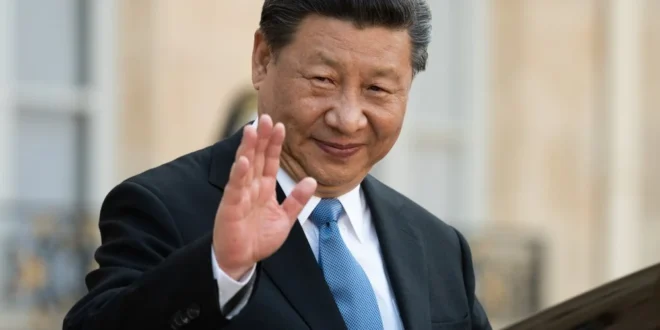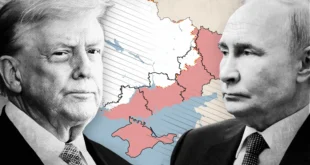Conner Fidder
Both nations have incompatible views on engagement.
There has been much speculation about an imminent U.S.-China rapprochement. President Joe Biden predicted an approaching “thaw” in U.S.-China relations that would open the path to a better relationship. This year, the Biden administration has sent a series of top officials to China to actualize the thaw. Secretary of State Antony Blinken, Treasury Secretary Janet Yellen, and Climate Envoy John Kerry visited the Middle Kingdom quickly to demonstrate their commitment to this new direction. It remains to be seen if the Biden administration can convince Beijing to engage in substantive cooperation.
At this point, it has become a cliché to say that Beijing’s decision-making process is a black box. Nevertheless, the aphorism holds. The conversations and policy debates within Zhongnanhai (the compound that houses the CCP leadership) remain a mystery to outside observers. The best approach to predicting how China will respond to these new advances is by understanding their recent behavior. A study of recent events demonstrates that the most significant barrier for Washington is China’s fundamentally different approach to cooperation.
The Two Lists & Three Bottom Lines
The Biden administration has consistently aimed to create space for areas of cooperation even when the U.S.-China relationship was at its most tense. In 2021, Deputy Secretary Wendy Sherman went to China to defend U.S. interests. Even in a tense conversation, Sherman stressed the importance of cooperation, highlighting climate change, drug control, and international and regional hotspot issues, as well as strengthening crisis management capacity and general conflict avoidance. The Chinese response was less than enthusiastic.
Rather than embrace Sherman’s proposals, her Chinese counterparts countered with what has been called the “two lists” and “three bottom lines.” The two lists primarily include an inventory of grievances the United States must “unconditionally” reverse to be rewarded with good relations with China. The demands included ending restrictions on Confucius Institutes, withdrawing the extradition request for Meng Wanzhou, and lifting visa restrictions for CCP members, government officials, and students.
The more concerning elements came from the “three bottom lines,” the first being: “The U.S. must not challenge, slander, or even attempt to subvert the path and system of socialism with Chinese characteristics—this is a core interest.” It is essential to understand that socialism with Chinese characteristics is not just China’s development strategy but contains fundamental revisionistand coercive elements that undermine U.S. interests. If the United States adhered to this bottom line, it would almost certainly entail abandoning U.S. assistance to Taiwan and American support for allies and partners in the region.
In the context of the two lists and three bottom lines, Foreign Minister Wang Yi put it more bluntly when he stated, “The U.S. side wants the climate change cooperation to be an ‘oasis’ of China-U.S. relations. However, if the oasis is all surrounded by deserts, then sooner or later, the ‘oasis’ will be desertified. China-U.S. cooperation on climate change cannot be divorced from the overall situation of China-U.S. relations.”
These demands indicate a larger pattern of how Beijing sees engagement with Washington. Beijing prefers a rigid linkage between the two spheres of cooperation and competition. This experience shows that unless Washington is ready to surrender in the great-power competition, China will not cooperate even on issues of converging interests.
The Four To-Do Lists
A year later, the Biden administration once again sought to delink areas of cooperation with Beijing and lower tensions. When Foreign Minister Wang Yi met with Secretary Blinken in Bali, Yi did not present Blinken with their original two lists and three bottom lines but instead gave Blinken a new configuration known as the “four to-do lists.” While never fully released, the first three lists were screeds against American “wrongdoings” and other perceived transgressions. However, the fourth list seemed to offer the administration some hope. It was a list of eight areas of mutual cooperation, including climate change, public health, and people-to-people exchange. Even if this list was to be a bright light, the follow-through on the Chinese side has been non-existent.
However, the U.S.-China meetings in Bali were a turning point in the relationship. Since Bali, China has abandoned these lists. However, this should not be mistaken for a shift in policy but rather a shift in tactics and rhetoric. U.S.-China cooperation is still essentially non-existent because China does not value delinking cooperation. Despite the recent high-level visits, the United States and China have failed to produce substantive cooperation.
U.S.-China Crisis Hotline
Even though China’s list diplomacy has primarily stopped and its rhetoric has cooled, its approach has not changed. How Beijing has handled the U.S.-China hotline and other critical communication channels is a good illustration. Crisis hotlines have been around for some time. The goal is to provide a quick and direct line of communication for policymakers to avoid misunderstandings and reduce tensions. During the Cold War, crisis communications were a reasonably reliable way for the United States and the Soviet Union to communicate during crises. These were never a means for ending rivalries or resolving disputes but simply a mechanism to manage competition. While not a form of diplomacy like the previous examples, China’s stance on this form of communication demonstrates its broader approach to cooperation.
Initially formed in 2008, the U.S.-China hotline now lies dormant. When the Biden administration decided to shoot down the Chinese spy balloon that entered U.S. airspace earlier this year, Defense Department officials called the hotline to communicate with the Chinese military. The Chinese refused to pick upthe phone. Moreover, the Chinese military has refused over a dozen meeting requests from the United States at multiple levels since 2021. The most recent rejection came this summer when Defense Secretary Lloyd Austin sought a meeting with Chinese Defense Minister Li Shangfu. Blinken pushed to establish a direct military line of communication between Washington and Beijing, and President Xi Jinping flatly rejected the initiative.
Like the other examples, the Chinese have said they will resume crisis communications when the United States has “created a proper atmosphere.” While crisis hotlines are more of a tool used during competition and less of an area of explicit cooperation like climate change or global pandemics, this example still indicates how Beijing approaches working with Washington. Crisis hotlines do not require China to sacrifice any national interests. All the Biden administration seeks is that they answer the phone. China’s reluctance to engage in an area vital to managing competition demonstrates that these two countries’ approaches to cooperation are far apart.
The Australian Example
This fundamental difference in approaches to cooperation ultimately explains why the recent visits to China were disappointing. However, this does not mean U.S.-China relations will enter a doom cycle. The China-Australia case might illuminate how the United States should approach this dilemma.
In 2020, China slapped Australia with a laundry list of tariffs for criticizing China. These tariffs were imposed on critical Australian exports like coal, wine, red meat, timber, and an 80 percent tax on barely exports—a severe hit to the Australian economy. Similar to the American experience, as Australia sought to engage with China, Australian officials were hit with a list totaling fourteen demands before cooperation could proceed. Even when Beijing welcomed the change in Canberra from the conservative-controlled Scott Morrison government to the new Labor-dominated Anthony Albanese premiership, China still issued four new demands. In response, Prime Minister Albanese also emphasized cooperation by stating, “We will cooperate with China where we can… But we will stand up for Australia’s interests when we must.” China’s demands failed to soften Canberra.
Fast forward to today. China has announced it is lifting its harsh barley tariffs, and negotiations are underway to remove a 218 percent tariff on Australian wine. Since 2020, Australia has met none of China’s demands. Instead, it released a defense review calling for the modernization of the Australian Defence Force and entered into a new security partnership with the United States and the United Kingdom (AUKUS).
The explanation for China’s reversal is simple. Canberra demonstrated its resolve by boosting competitive policies and illustrating that Chinese coercion will not get Australia to the negotiating table. When Canberra decided to take a firm stance, Beijing adjusted. As the United States continues to think about diplomacy with China, Washington should recognize the precedence set by this scenario.
The Dead End of Engagement
Every administration has sought engagement with China, with varying levels of success. High-level diplomatic visits can have utility. The United States should continue meeting and talking with Chinese officials. Normalizing communication and dialogue can help prevent a complete deterioration of relations, and it costs the United States very little. It can help manage our competition and stymie a misunderstanding. While the United States and China have accomplished no concrete initiatives, they have established several consultation mechanisms that might grease the wheels of further engagement. However, policymakers must be clear-eyed about how the Chinese view engagement and cooperation. Since the Biden administration has taken office, U.S. officials have made several overtures to Beijing about cooperation. China’s unwillingness to delink areas of competition from realms of cooperation and its demand for unconditional concessions is the most significant barrier to a U.S.-China rapprochement. Beijing’s recent behavior demonstrates that China is not interested in reciprocal reconciliation. Washington must not sacrifice our interests for a goal that may be unattainable.
 Geostrategic Media Political Commentary, Analysis, Security, Defense
Geostrategic Media Political Commentary, Analysis, Security, Defense





